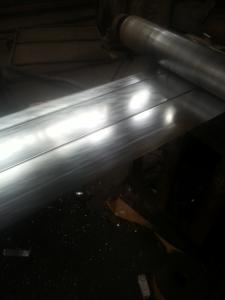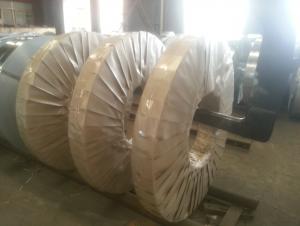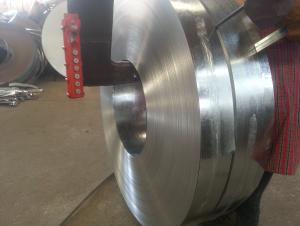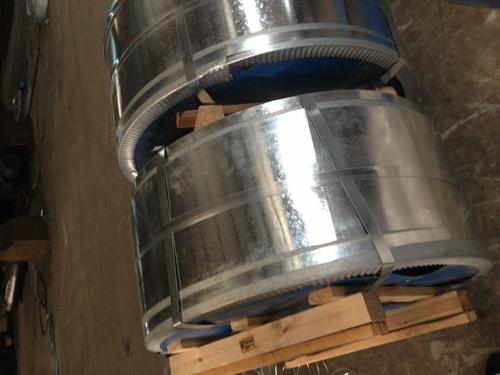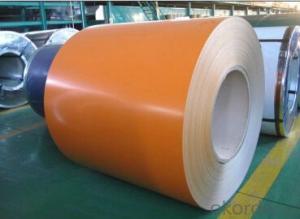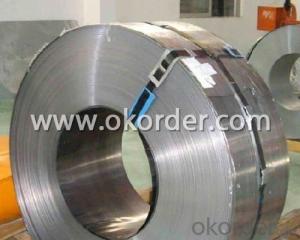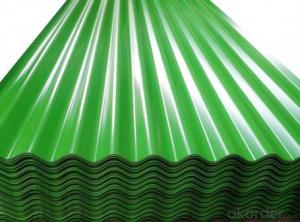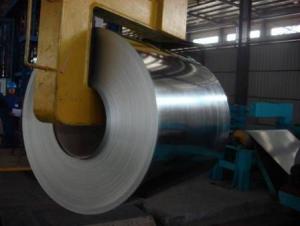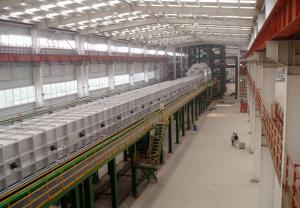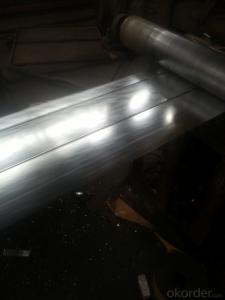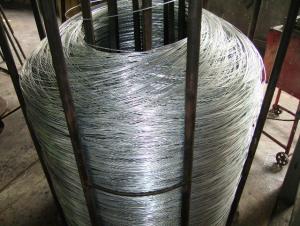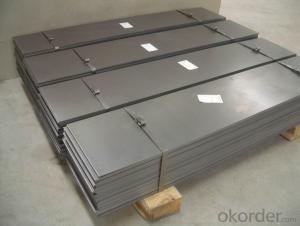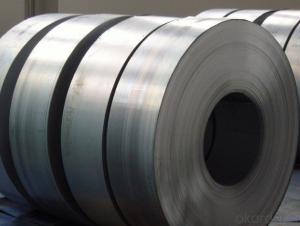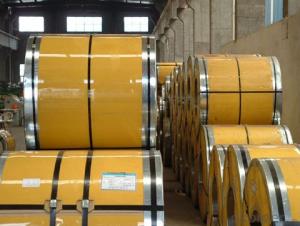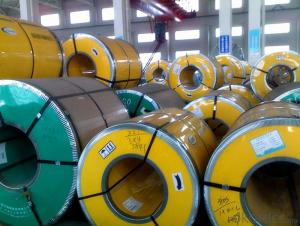Hot Dip Galvanized Steel Strips
- Loading Port:
- China Main Port
- Payment Terms:
- TT OR LC
- Min Order Qty:
- -
- Supply Capability:
- -
OKorder Service Pledge
OKorder Financial Service
You Might Also Like
Product Description:
Hot Dipped Galvanized Steel Strips
Hot-dip galvanized steel strips are available with a pure zinc coating through the hot-dip galvanizing process. It offers the economy, strength and formability of steel combined with the corrosion resistance of zinc. The hot-dip process is the process by which steel gets coated in layers of zinc to protect against rust. It is especially useful for countless outdoor and industrial applications.
Product Description Of Hot Dipped Galvanized Steel Strips
Thickness | 0.18mm-3mm |
Width | less than 600mm |
Zinc Coating | 30-200g/m2 |
Internal Diameter | 508mm/610mm |
Coil Weight | less than 3MT |
Quality | commercial and structural quality |
Surface Treatment | regular & minimum spangle, zero spangle, oiled & dry, chromated , non-skin pass , skin pass |
Standard | JIS G 3302, ASTM A 653M, EN 10327 |
Steel Grade | SGCC, CS, FS, SS, LFQ, DX51D+Z , S280GD |
Technical Data Of Hot Dipped Galvanized Steel Strips
Chemical Composition | C | Si | Mn | P | S |
0.04-0.06% | 0.01-0.03% | 0.18-0.22% | 0.014-0.016% | 0.006%-0.009% |
Yield Strength | (Mpa) 280-320 |
Tensile Strength | (Mpa) 340-390 |
Elongation | 20%-30% |
Out-of-square | not exceed 1% Flatness |
Bow | 15mmmax |
Edge Wave | 9mmmax |
Centre Buckle | 8mmmax |
Bending At 180 Degree | No crack, purling and fraction |
Application Of Hot Dipped Galvanized Steel Strips
It can be widely used in transportation, light industry, civil usage and farming. It is also the perfect building material in construction for making roofing tile, steel profiles for wall partition, T-bar, studs, fireproof door, air conditioning duct and home appliance.
- Q: How do steel strips respond to different machining processes?
- Different machining processes elicit varying responses from steel strips, which depend on factors such as the steel type, desired outcome, and specific machining technique employed. In the realm of cutting processes like shearing or sawing, steel strips exhibit favorable responses owing to their high strength and hardness. Nevertheless, careful consideration of the cutting tool and cutting parameters is imperative to achieve a clean cut and prevent excessive tool wear. Drilling or milling operations may require heightened attention when working with steel strips due to their tough nature and proclivity to work harden. The utilization of appropriate cutting tools with suitable geometries and coatings is essential to effectively remove material and prevent excessive heat accumulation. Turning or lathing operations pose challenges, especially when dealing with harder grades of steel strips. The selection of cutting tools must be meticulous to withstand the substantial forces involved and ensure optimal chip control and surface finish. Grinding serves as another prevalent machining process employed on steel strips, particularly for attaining precise dimensions and surface finish. This process effectively eliminates material and enhances the strip's dimensional accuracy. However, specific grinding wheels and coolant systems are necessary to regulate heat generation and maintain dimensional stability. All in all, steel strips possess versatility and can be machined through various processes. However, it is crucial to account for the steel's specific characteristics, desired outcome, and the capabilities of the machining equipment to guarantee successful and efficient machining operations.
- Q: Are steel strips used in the production of metal reinforcements?
- Steel strips are frequently utilized for the manufacturing of metal reinforcements, owing to their exceptional strength and durability. These strips can be molded into different shapes and structures, such as bars or mesh, which are then employed to reinforce concrete structures such as buildings, bridges, and roads. By incorporating steel strips into the production of metal reinforcements, the structural integrity and load-bearing capacity of these concrete structures are significantly enhanced, rendering them more resistant to cracking, bending, and other types of mechanical strain. Additionally, steel strips can be effortlessly tailored and fabricated to meet precise engineering specifications, making them a versatile choice for the production of metal reinforcements.
- Q: What are the different surface treatments for steel strips to improve adhesion?
- There are several surface treatments that can be used to improve adhesion on steel strips. Some common techniques include cleaning and degreasing the surface, applying a primer or conversion coating, using mechanical methods like abrasive blasting or sanding to create a rough surface, and using chemical treatments such as acid etching or phosphating to enhance adhesion.
- Q: Can steel strips be customized according to specific requirements?
- Yes, steel strips can be customized according to specific requirements. Customization can involve various aspects such as dimensions, thickness, width, surface finish, and specific compositions or grades of steel. This allows steel strips to be tailored to meet the unique needs of different industries and applications.
- Q: How do steel strips contribute to sustainable manufacturing practices?
- Steel strips contribute to sustainable manufacturing practices in several ways. Firstly, steel is a highly recyclable material, meaning that steel strips can be recycled and reused multiple times without losing their properties. This reduces the need for new steel production, conserves natural resources, and minimizes environmental impacts associated with mining and extraction. Additionally, steel strips are durable and have a long lifespan, making them suitable for various applications and reducing the need for frequent replacements. This saves energy and resources. Furthermore, steel strips can be manufactured using energy-efficient processes, such as electric arc furnaces, which emit fewer greenhouse gases compared to traditional steelmaking methods. Overall, the use of steel strips promotes circular economy principles, reduces waste generation, and contributes to a more sustainable manufacturing industry.
- Q: What is the surface finish of steel strips?
- The surface finish of steel strips can vary depending on the specific requirements and processing methods used. It can range from a smooth and polished finish to a rough and textured surface. Common surface finishes for steel strips include mill finish, brushed finish, polished finish, and galvanized finish.
- Q: Pickling process of cold rolled strip
- The pickling section can be divided into two ways: sulfuric acid pickling and hydrochloric acid pickling, but because hydrochloric acid pickling has more advantages, we can explain it by the acid washing mechanism of hydrochloric acid.The chemical reaction between hydrochloric acid solution and iron oxide scale is:FeO + 2HCl = FeCl2 + H2OFe2O3 + 6HCl = 2FeCl3 + 3H2OHydrochloric acid solution can quickly dissolve all kinds of oxide scales, pickling reaction can be carried out from the outer layer. Hydrochloric acid pickling is mainly chemical corrosion, and hydrochloric acid pickling is very harmful to metal matrix. Therefore,The structure is not sensitive to the efficiency of acid pickling of iron oxide scales, and the steel surface after pickling clean silver. The rate of acid washing reaction is closely related to the degree of cracking of strip iron before picklingOff.
- Q: How are steel strips processed for surface texturing?
- Steel strips can be processed for surface texturing through various methods such as mechanical etching, shot blasting, or chemical etching. These processes involve altering the surface of the steel strips to create desired textures or patterns, enhancing their visual appeal and functional properties.
- Q: What are the main factors affecting the fatigue life of steel strips?
- The main factors affecting the fatigue life of steel strips include the material's microstructure, surface condition, stress level, loading frequency, and environmental conditions. The presence of impurities or defects in the microstructure can reduce the fatigue life, while a smooth and clean surface can enhance it. Higher stress levels and repeated loading cycles can also decrease the fatigue life of steel strips. Additionally, environmental conditions such as temperature, humidity, and corrosive agents can accelerate fatigue failure.
- Q: Are steel strips suitable for making shelving units?
- Yes, steel strips are suitable for making shelving units. Steel is a strong and durable material that can support heavy loads, making it ideal for constructing sturdy shelving units. Additionally, steel is resistant to bending and warping, ensuring the longevity of the shelving units.
Send your message to us
Hot Dip Galvanized Steel Strips
- Loading Port:
- China Main Port
- Payment Terms:
- TT OR LC
- Min Order Qty:
- -
- Supply Capability:
- -
OKorder Service Pledge
OKorder Financial Service
Similar products
Hot products
Hot Searches
Related keywords

